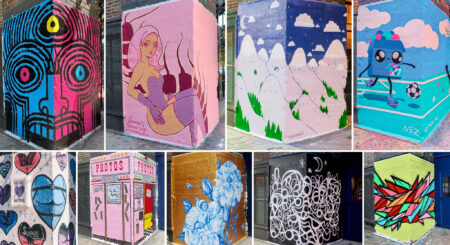Whilst scrolling through all the awesome t-shirts created by the Threadless community, a noticeable pattern emerged. All the t-shirts are surely visually appealing to the eye, but one influential element separates some designs from others.
That element is the use of concept.
Concept is the raw idea that you want to communicate through your design. I believe “concept is key” because it’s the element that adds depth to your work, unlocking your potential as an effective designer. Containing a larger message, a design backed by a well-thought-out concept becomes that much more relatable and relevant to a wider audience, boosting its overall appeal.
Why is this important for you? Submitting a design to Threadless with a strong concept will likely increase its chances for print. I have researched some of the most printed artists, and found the majority of them employ concepts in their work.
I rounded up a few of my favourite Threadless designs that feature a genius concept as a foundation. To understand the thinking behind the designs, I asked each artist to explain their concept. Read on to unveil the mysteries of brilliant concepts!

David, on the concept behind “Anxietea”:
“I try to make my designs communicate on more than one level. Here’s a breakdown of the levels of ‘Anxietea’:
- Level 1: A personification of how tea relaxes us. Originally, the first few sketches of ‘Anxietea’ had soothing, supportive messages, but they felt a little too on-the-nose and one-dimensional. ‘Calm the Hell Down’ sounded better because:
- Level 2: The dissonance between the message and the delivery (saying ‘calm down’ in an agitated way) is funny, and I played that up in the drawing.
- Level 3: ‘Calm the Hell Down’ is something people really say (‘I just told my husband that last night…’, ‘My daughter says that all the time…’)
- Level 4: The message transcends the teacup drawing; many of us identify with the need to calm down or the desire for everyone else to calm down.
- Level 5: It calls to mind the famous ‘Keep Calm…’ posters, and could be read as a slightly more blunt version.
In the end, each level allows more people to find a connection with the design. Hopefully, this encourages them to hold on to it in some form, whether by sharing it on Facebook or wearing it on a t-shirt.”

Katie, on the concept behind “Scarred Face”:
“I love a good mash-up parody, and it seemed so obvious that Harry Potter was Scarface. Quite simply, the idea had to be parodied by means of the famous Scarface poster.”

John, on the concept behind “The Sound of Silence”:
“This design takes something very familiar, sheet music, and presents it in a way people don’t expect. It’s also, frankly, straightforward: in sheet music terms, a blank sheet of music is the sound of silence.”
Hopefully the above input from talented artists will help you understand their thinking behind effective concepts. And for a little extra help, here are four tips for creating a great concept for your next Threadless submission!
- Brainstorm: Put pen to paper and create lists of words, phrases, puns, themes, or anything that you think might be worth generating ideas for. I’ve recently started using Pinterest to gather inspiration for crafting concepts as well as discovering design trends with mass appeal that I can use in my work. Researching famous artists/designers to see and understand their practices can also be an effective strategy, particularly when brainstorming your ideas.
- Be original: This can often be the hardest part when generating a concept. Unfortunately, oftentimes you’ll come up with a concept only to discover it’s been done before. However, all is not lost! If you find an existing design with a similar concept, evaluate it extensively to draw inspiration and generate a new, original concept.
- Take your time: “Rome wasn’t built in a day”. If you run into a problem while designing, don’t be afraid to step away and take a breather; it may help a solution to rise. Like writers, artists and designers can also experience a creative block. If you don’t come up with a genius concept the first time round, sit back and relax! I tend to listen to music, surf the web, or even go for short walks to gather inspiration if I’m stuck.
- Ask for feedback: Whilst generating your rad concept it’s worth asking the Threadless community, friends, family, and even work colleagues to voice their thoughts and opinions. Regardless of whether they have an artistic or design background, their opinion is important; they might be part of the demographic you’re trying to reach. I tend to use Facebook or the Threadless Forum to post various work in progress images to gather thoughts and impulse feelings on what I’ve done thus far. By sharing your ideas and gathering feedback, you can determine whether you’ve developed a strong concept that will work within your design.
Are there any Threadless designs with particularly strong concepts that you’ve found inspiring? Let us know in the comments!
And in the meantime, good luck creating awesome concepts for your future Threadless submissions!




